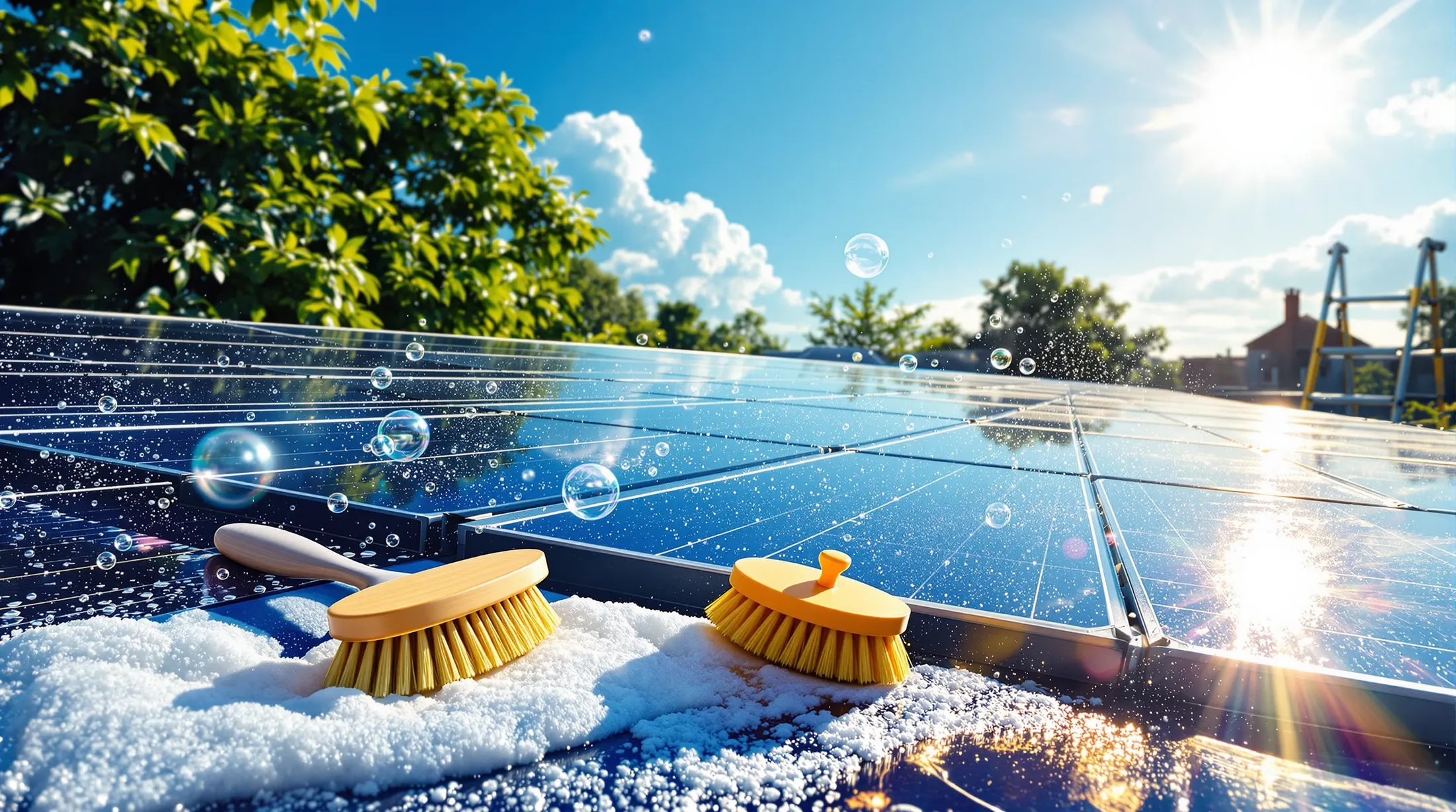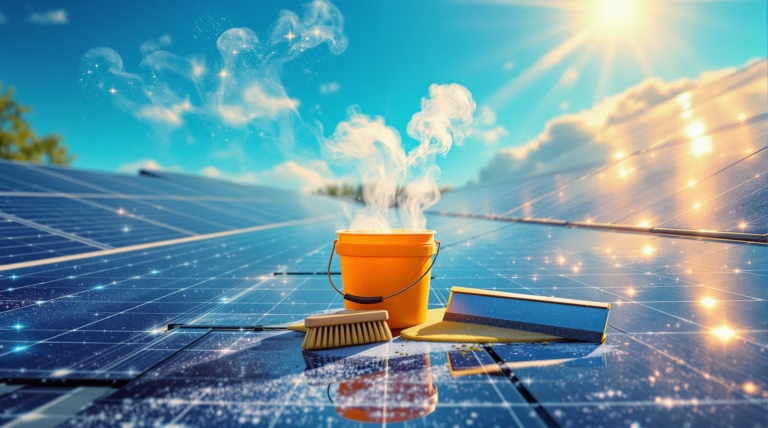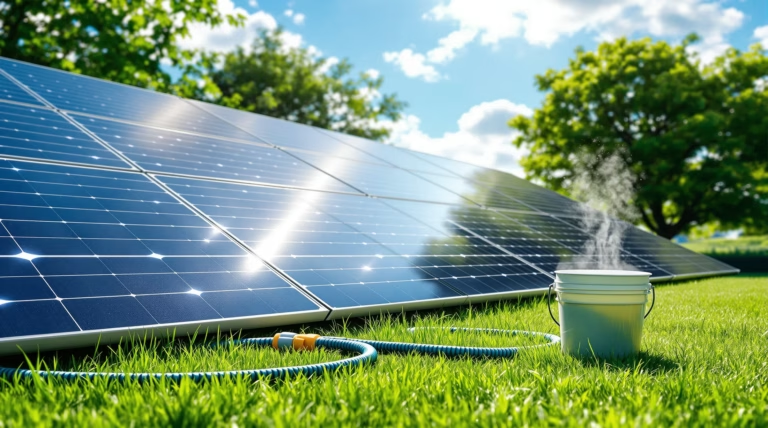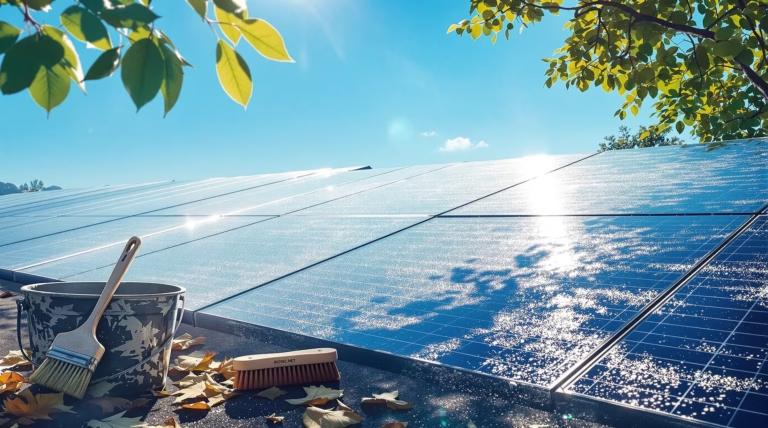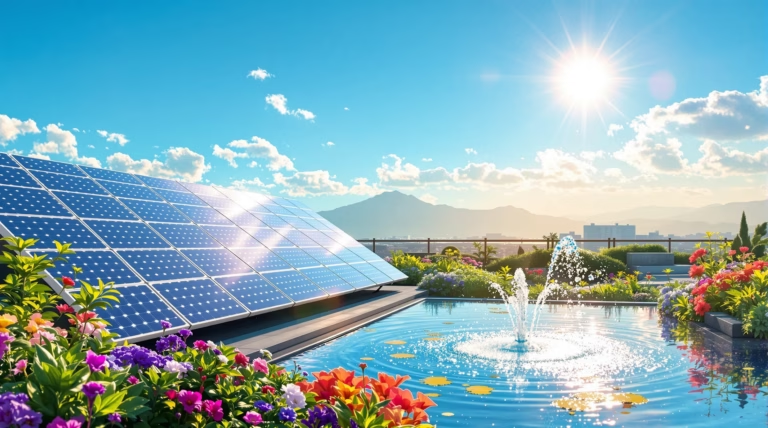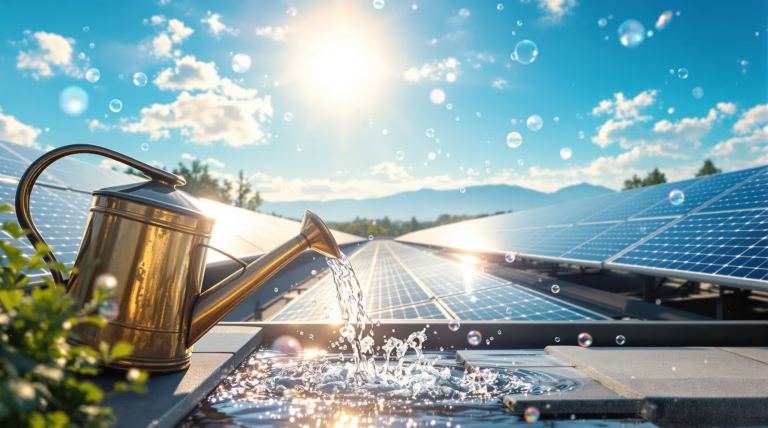How to Wash Solar Panels on Roof: A Step-by-Step Guide
Maintaining your solar panels’ efficiency is crucial for maximizing your renewable energy investment. Regular cleaning not only ensures optimal performance but can also significantly impact your energy savings. Let’s explore the essential aspects of solar panel maintenance and cleaning to help you get the most out of your system.
Why Cleaning Solar Panels is Essential for Optimal Performance
Solar panels face constant exposure to environmental elements that can compromise their efficiency. When dust, pollen, bird droppings, leaves, and debris accumulate, they create a barrier between sunlight and photovoltaic cells, significantly reducing energy production.
Research demonstrates the substantial impact of dirty panels:
- Up to 7% annual energy loss in the United States due to soiling
- As high as 50% efficiency reduction in dustier regions like the Middle East
- Decreased monthly electricity generation and financial returns
- Reduced overall system lifespan without proper maintenance
- Compromised performance even with natural rainfall, which can’t remove stubborn residues
How Often Should You Wash Your Solar Panels?
The optimal cleaning frequency varies based on your location and environmental conditions. While once or twice yearly cleaning suffices for most installations, several factors may require more frequent maintenance:
| Environmental Factor | Recommended Cleaning Frequency |
|---|---|
| Moderate weather conditions | 1-2 times per year |
| High dust or construction areas | Quarterly |
| Bird flight paths | Every 3-4 months |
| Heavy pollen zones | Seasonal (spring focus) |
| Areas with air pollution | Quarterly |
Materials and Tools Needed for Safe Solar Panel Cleaning
Proper equipment selection ensures both safety and effectiveness during the cleaning process. Essential tools include a soft bristle brush, squeegee with rubber blade, and adjustable garden hose. For elevated installations, extension poles provide safe access without roof climbing.
Choosing the Right Cleaning Solutions for Solar Panels
- Lukewarm water – suitable for routine cleaning
- Mild dish soap solution – effective for stubborn grime
- Distilled water and vinegar mixture – natural cleaning alternative
- Avoid: window cleaners, alcohol-based products, and water-repelling agents
Essential Tools for DIY Solar Panel Cleaning
- Soft-bristle brush with split-tip bristles
- High-quality squeegee with soft rubber blade
- Extension poles with secure attachments
- Inline garden hose filter for hard water areas
- Microfiber cloths for spot cleaning
- Spray bottle for targeted cleaning
- Safety equipment (non-slip shoes, gloves, harness)
Step-by-Step Guide to Washing Solar Panels on Your Roof
Cleaning solar panels requires careful attention to detail and proper technique. Begin by completely shutting off your solar panel system according to manufacturer’s instructions to prevent electrical hazards. Schedule cleaning for early morning or evening when panels are cool to avoid thermal shock from water contact.
- Initial rinse – Use moderate water pressure from a garden hose to remove loose debris
- Apply cleaning solution – Use a soft-bristle brush with mild soap solution
- Gentle scrubbing – Work in circular motions, focusing on stubborn spots
- Thorough rinse – Remove all soap residue to prevent film buildup
- Inspection – Check from multiple angles for remaining streaks or spots
Safety Precautions When Cleaning Solar Panels on a Roof
- Evaluate roof pitch, height, and condition before starting
- Wear proper safety equipment: hard hat and non-slip footwear
- Use fall protection harness connected to secure anchor points
- Work with a ground-level assistant for tool support and safety monitoring
- Choose calm, dry weather conditions to minimize slip hazards
How to Access Hard-to-Reach Solar Panels Safely
| Access Method | Best Practice |
|---|---|
| Ground-based cleaning | Use telescopic extension pole (up to 24 feet) |
| Extension ladder | Follow 4-to-1 ratio placement rule with stabilizers |
| Water-fed pole systems | Professional-grade tools for simultaneous scrubbing and rinsing |
Drying Solar Panels After Washing
Proper drying ensures maximum energy production after cleaning. Use a soft rubber blade squeegee with overlapping downward strokes to prevent streaking. For optimal results:
- Clean early morning to allow natural evaporation
- Use distilled or deionized water for final rinse in hard water areas
- Consider installing a water softener or deionization filter
- Ensure complete panel drying before system reactivation
- Use microfiber cloth for removing persistent water spots
Common Mistakes to Avoid When Cleaning Solar Panels
- Using abrasive materials – rough scrub brushes, steel wool, or scouring pads create microscopic scratches that reduce energy production
- Applying harsh chemicals – bleach, ammonia, or alcohol-based solutions damage protective coatings and sealants
- High-pressure washing – forceful water streams can weaken panel seals and allow moisture penetration
- Using hot water on warm panels – thermal shock from temperature differences can crack glass surfaces
- Unsafe cleaning attempts – working on steep roofs without proper safety equipment risks serious injury
When to Consider Professional Solar Panel Cleaning Services
Professional cleaning becomes essential in specific environmental conditions and situations:
- Location-specific challenges – heavily polluted urban areas or coastal regions with salt spray buildup
- Natural obstacles – properties with overhanging trees causing leaf litter and sap deposits
- Post-weather events – after storms, dust storms, or natural disasters requiring expert assessment
- Performance issues – sudden drops in energy production beyond normal seasonal variations
- Safety concerns – installations on steep-pitched roofs or multi-story buildings
When selecting a professional service, verify their credentials and experience:
| Verification Point | What to Check |
|---|---|
| Experience | Specific solar panel cleaning expertise |
| Methods | Cleaning techniques and solutions used |
| Safety | Insurance coverage and safety protocols |
| References | Previous solar customer testimonials |
Environmental Considerations for Solar Panel Cleaning
Water Conservation Methods
- Collect rainwater in barrels for cleaning purposes
- Use water-conserving nozzles for efficient cleaning
- Schedule early morning cleanings to minimize evaporation
- Consider electrostatic or dry-cleaning tools as alternatives
- Maintain regular cleaning schedules to prevent excessive water usage
Eco-Friendly Cleaning Solutions
- Biodegradable, phosphate-free soaps (few drops per gallon)
- Vinegar solution (1:8 ratio with water) for moderate soiling
- Avoid chemical cleaners that can harm local ecosystems
- Use minimal cleaning agent concentrations
- Choose products that break down naturally

